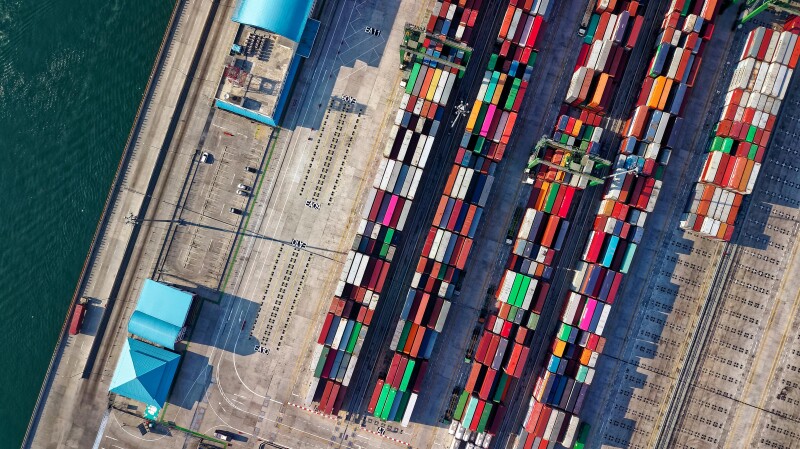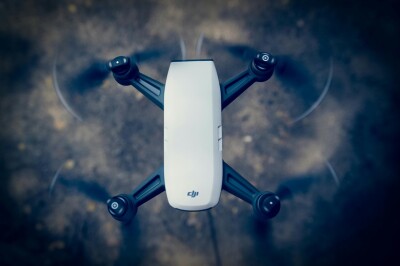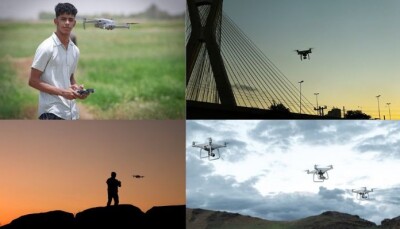The drone industry is facing a major upheaval right now.
If the Countering CCP Drones Act—commonly known as the DJI ban—gets passed, drone technology from the biggest drone company in the world will be made unavailable.
Most of the discussion right now is about whether we’ll lose the ability to buy DJI drones.
But an important counterpart to that conversation is asking whether American drone companies are ready to fill the demand a DJI ban could create—and whether our current supply chain is anywhere near ready to help those companies create drones without Chinese components.
The Current Landscape for US Drone Companies
First, let’s be clear. The possibility of a DJI ban or a general Chinese drone ban isn’t new or surprising.
As the LiDAR Pros Team recently pointed out, there have been security concerns about DJI going back to 2016. Even then, industry insiders were observing that “reliance on DJI's technology without considering alternatives was a precarious strategy.” (The Army instituted a blanket ban on DJI in 2017, the first in what became a cascade of federal agency bans and leaked cautionary memos.)
But considering alternatives is hard when there are none.
Several US drone companies have tried to stand up consumer alternatives to DJI—3D Robotics with its Solo drone, GoPro with its Karma, and most recently Skydio have all lost the consumer race to DJI.
No US drone company currently stands in the wings, ready to take DJI’s place for consumer drones. If DJI disappears, there will simply be a vacuum for drones in the $500-$5,000 range.
This could have major ramifications. Photographers who run their own small business and want to add drone shots to their offerings may simply be unable to do so. And solopreneurs may be unable to launch a drone business without spending a lot more out of the gate, which may lead to many not bothering to do it at all. (To this point, DJI estimates that 67% of UAV operators in the US would go out of business without Chinese drones.)
Commercial drone operations may fare better. Theoretically, companies like Skydio, BRINC, Red Cat’s Teal Drones, and the new Anzu Robotics are all poised to fill the gap DJI’s absence could leave. But the truth is, it seems unlikely these companies can make enough drones to meet the demand DJI’s departure would create.
Why? Well, one big reason is that the American drone supply chain just hasn’t been developed enough for these companies to make enough drones at the scale required to meet US demand.
US Drone Companies Already Have a Big Supply Chain Issue
Recently, I spoke with a drone expert at a major American drone reseller who was having deliverability issues at a US drone company, which is one of its biggest drone providers.
The drone company was facing such long delays in filling drone orders that the reseller’s clients were pulling out after having signed contracts and asking for drones from different companies. These customers didn’t want to wait any longer, especially when, after months of delays, it was unclear if their drones would ever get delivered.
The reason for the delays? The company simply couldn’t source all the parts needed to make its drones. And that was because it had stopped using parts made in China.
This story isn’t an isolated event. Chris Fink, founder of Unmanned Vehicles Technology (UVT), recently shared that it took 142 days for him to receive just two Blue UAS drones—he ordered them on January 3, 2024 and didn’t get them until May 24, 2024. In the same amount of time, he ordered and received about 270 Chinese drones.
And, as Fink points out, “. . . that [delay] is with today's demand for American-made drones. Imagine what those turnaround times would look like if the demand . . . doubled” or even grew to account for 80% of the market, which is about what DJI currently holds.
Commenting on Fink’s experience, JD D’Arville, UAS program administrator at the Alabama Department of Transportation, shared that it took him eight months to get a single Skydio X10.
There are lots of stories like this out there, all underscoring the current struggles US drone companies are facing with the supply chain when it removes China from the equation.
The Connection Between Drone Legislation and Supply Chain Issues
The production issues outlined above can be traced directly to the American Security Drone Act (ASDA), which was passed as part of the 2023 National Defense Authorization Act (NDAA).
The ASDA bans federal agencies from using drones or drone components made by covered foreign entities—namely, China. (Iran, North Korea, and Russia are also covered foreign entities, but none of them are players in the drone industry.)
And it’s the drone components part of the law that US drone companies—or really any Blue UAS company trying to be NDAA-compliant, including Parrot, which is based in France, or Wingtra, which is based in Switzerland—are struggling with.
And here’s the thing: as we noted above, none of this is new or surprising.
Back in 2020, I did a series of interviews for UAV Coach with drone industry leaders about the potential impact of the ASDA and found that supply chain issues were a massive concern for everyone. Chinese components were used in the vast majority of drones in the world at that time, regardless of whether the drone was made in the US, Switzerland, or elsewhere, and people seemed acutely aware of that reliance.
At the time, Michael Quiroga, Chief Commercial Officer at Aegis and, at the time, Team Lead for the Critical Infrastructure Partnership Advisory Council (CIPAC) UAS Security Operations at the DHS, pointed out that COVID-19 had revealed just how dependent the US was on China for drone production.
But don’t worry, several of my interviewees reassured me. US leaders are aware of the problem, and they’re working hard to establish native US drone manufacturing, including the creation of a drone supply chain that doesn’t rely on China.
Federal grants, subsidies, and special initiatives from the Air Force and the Pentagon, such as the Replicator Program, have all been meant to bolster US drone production, and spur the creation of domestic drone components. But here we are, four years later, and the industry is still incredibly reliant on Chinese components—and it seems we’re still not working to make viable alternatives.
So, What Will Happen If the Countering CCP Drones Act Gets Passed?
The Countering CCP Drones Act was passed by the House a few weeks ago. If it’s passed by the Senate and becomes law, DJI will effectively be banned from selling drones in the US.
While the law doesn’t call for banning DJI drone components—which, by the way, are often used in the production of drones by other companies—its passage would create a sudden demand for drones from other sources.
And our current supply chain just isn’t developed enough to support that demand. Put short, we’ll face the reality Fink outlines above: ballooning demand for commercial drones with longer and longer wait times—plus, again, no real options at the consumer level.
In another four or five years we may solve the problem. But in the meantime, the burgeoning drone industry here may stagnate just as its starting to take off, with young people turning to different career paths and degrees, existing drone business owners closing shop, and drones becoming so expensive that they’re only used in high-end, high-ROI work like industrial inspections, mapping, or high-cost movie productions.
Of course, this is all speculative for now. But regardless of what happens with the CCP Drones Act, it seems likely that legislators will keep pushing to ban DJI and Chinese drones in general—and that, no matter how much time passes, the US drone industry will be caught flat footed when it comes to its ability to meet US demand.
















Comments